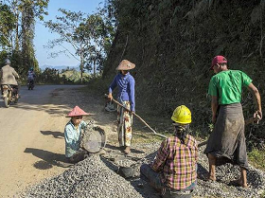
A government-appointed commission is to soon make a recommendation on the fate of the $3.6 billion, China-financed Myitsone Dam in Myanmar. The decision is a daunting test for Aung San Suu Kyi, who risks angering China, the region’s economic powerhouse, if she cancels the project, or the public if she lets it go forward.
Key test for Suu Kyi
Analysts say the commission’s report would provide her the political cover to kill an unpopular white elephant that she inherited from Myanmar’s former military government. But getting out of the deal would be difficult. If her government cancels the project outright, it could have to repay some $800 million that the state-owned Chinese developer says it has already spent on the project.
If Myanmar offers China other dam projects in return, a compromise her government has floated, they are likely to impinge on disputed ethnic areas where they could threaten the peace talks she has championed since her political party came to power last year.
The Myitsone Dam is among the largest of many Chinese-financed energy and mining projects approved by the military junta that ruled Myanmar until 2011. It is especially contentious because it would be the first dam to cross the Irrawaddy River, the mythic cradle of civilisation for Myanmar’s ethnic Burman majority.
While officials said the dam would provide Myanmar much-needed cash and electricity, critics said it would cause irreparable harm to the river, destroy fish stocks downstream and displace thousands of villagers. But perhaps the most incendiary objection was that under the deal struck by the ruling generals, 90% of the dam’s electricity could go to China.
As protests spread to Myanmar’s cities, Ms. Suu Kyi had spoken out against the dam.
In 2011, the military-backed transitional government yielded to public pressure and suspended the project, the decision coming as a shock to Chinese officials and businessmen.
The Myitsone was meant to be the first and largest of seven dams planned by the Chinese developer. It would generate more power than the entire country produces now, according to some estimates, but would still not cure the country’s chronic energy shortages.
One reason for that, experts say, is that there is no grid connecting the dam to Myanmar’s major towns and cities.
To repay or to shift?
The dam’s developer, State Power Investment Corp., has already spent $800 million on feasibility and technical studies, bridges, electrical grid updates and other supporting infrastructure, a person familiar with the dam contract said. The money was borrowed from commercial banks, he said, so the cost keeps growing as the loans accrue interest.
Officials close to Ms. Suu Kyi have said that negotiations were under way for Myanmar to pay China, or apply the money to other projects, if the dam is not built. NYT























